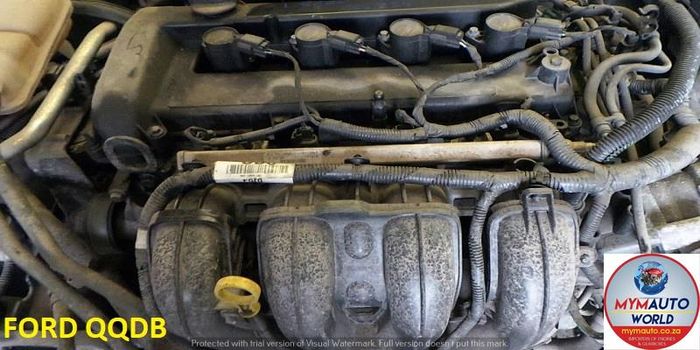Budget-friendly Opel Corsa Engine Options for Your Spending plan
Budget-friendly Opel Corsa Engine Options for Your Spending plan
Blog Article
Discovering the Inner Operation of a Compact Automobile's Engine System
As chauffeurs, we usually take for given the detailed processes that take place within the confines of our lorry's engine system. In this exploration of a small vehicle's engine system, we will untangle the inner functions of this mechanical harmony, dropping light on the enigmas that drive us forward on our everyday trips.
Combustion Process Review
The combustion process in a portable car's engine system is an essential mechanism that effectively transforms gas into energy to power the car. This procedure occurs within the combustion chamber of the engine, where fuel and air mix, spark, and generate controlled explosions. The burning procedure contains four primary phases: consumption, power, exhaust, and compression.
During the intake phase, the piston moves downward, attracting in a mix of air and gas into the burning chamber. The next phase, compression, includes the piston relocating up, pressing the air-fuel mix to raise its strength. Subsequently, in the power stage, the spark plug stirs up the compressed blend, resulting in a fast expansion of gases that requires the piston pull back. This downward activity produces the power required to drive the vehicle. Lastly, in the exhaust phase, the burned gases are eliminated from the combustion chamber with the exhaust shutoff, preparing the chamber for the next cycle. This cyclic burning process is fundamental to the procedure of a portable vehicle's engine system, ensuring effective energy conversion for propulsion.
Piston and Cylinder Interaction

The piston's accurate fit within the cylinder is necessary for preserving ideal compression and protecting against power loss throughout burning. Limited clearances in between the piston and cyndrical tube wall surfaces make sure effective sealing, permitting the piston to move efficiently without enabling gases to leak past. Proper lubrication is also important to decrease friction and put on in between these parts, improving durability and efficiency.
Furthermore, the layout and products utilized in producing the piston and cylinder influence engine effectiveness and longevity. Modern engines often use light-weight yet resilient materials like light weight aluminum alloys for pistons and cyndrical tube liners to reduce inertia and enhance thermal efficiency. On the whole, the unified interaction in between the piston and cyndrical tube is fundamental to the engine's functionality and total performance.
Fuel Shot System Performance
Fuel shot systems in compact lorry engines play an essential function in precisely supplying fuel to the burning chamber for regulated and efficient ignition. The gas injection system operates by injecting gas into the burning chamber at the ideal minute during the engine's procedure (opel corsa engine). This accurate timing ensures that the fuel mixes uniformly with the air for proper burning, leading to enhanced gas effectiveness and lowered discharges
There are largely 2 types of fuel shot systems used in small lorry engines: port fuel shot (PFI) and straight fuel shot (DFI) PFI systems inject fuel right into look at here the intake port before the consumption shutoff, while DFI systems inject gas straight into the burning chamber. Both systems have their benefits, with DFI providing much better gas atomization and PFI providing a much more cost-efficient service.
Recognizing Engine Cooling Systems
Efficient procedure of a compact lorry's engine counts greatly on the effectiveness of its cooling mechanisms. The air conditioning system in a small car generally consists of numerous elements functioning with each other to control the engine temperature. Understanding these engine air conditioning systems is vital for keeping the efficiency and durability of a portable vehicle's engine system.

Exhaust System Components Explained
The optimum performance of a small car's engine air conditioning systems depends on a corresponding system recognized as the exhaust system, which makes up numerous crucial components for making certain effective emissions and engine efficiency. The exhaust system includes parts such as the exhaust manifold, catalytic converter, muffler, and tailpipe. The exhaust manifold gathers exhaust gases from the engine's routes and cyndrical tubes them to the catalytic converter. The catalytic converter after that transforms hazardous toxins in the exhaust into much less damaging emissions prior to launching them via the muffler and tailpipe.
One important element of the exhaust system is the oxygen sensing unit, which keeps track of the oxygen degrees in the exhaust gases to aid regulate gas usage and guarantee optimum engine performance. opel corsa engine. Furthermore, the resonator might exist in some exhaust systems to decrease noise degrees. On the whole, the exhaust system plays an essential function in keeping engine efficiency, minimizing unsafe emissions, and guaranteeing a quieter driving experience for portable lorry owners

Final Thought
In verdict, the compact car's engine system is a complicated mix of components that collaborate to assist in the burning procedure, convert fuel into energy, and get rid of waste gases. Recognizing the internal workings of the engine system, including the piston and cyndrical tube communication, gas shot system, engine air conditioning devices, and exhaust system components, is essential for preserving ideal efficiency and performance of the vehicle.
The combustion process in a compact vehicle's engine system is an essential device that successfully transforms gas right into power to power the lorry.Gas shot systems in small vehicle engines play a crucial role in look at here precisely delivering fuel to the burning chamber for controlled and reliable ignition.There are largely 2 kinds of fuel injection systems used his explanation in compact lorry engines: port gas shot (PFI) and straight fuel injection (DFI) Understanding these engine air conditioning devices is crucial for preserving the performance and longevity of a portable lorry's engine system.
The ideal performance of a compact vehicle's engine cooling systems depends on a corresponding system known as the exhaust system, which makes up various important components for making certain reliable emissions and engine efficiency.
Report this page